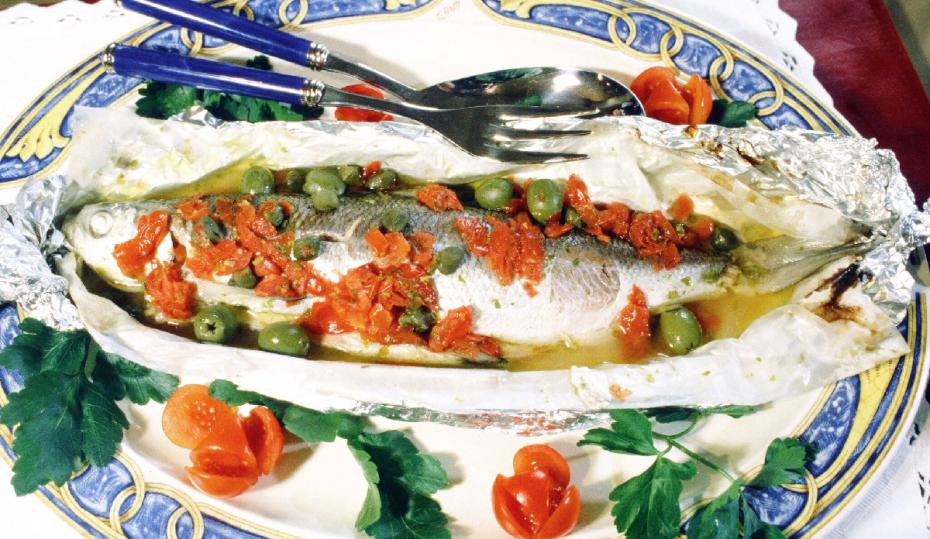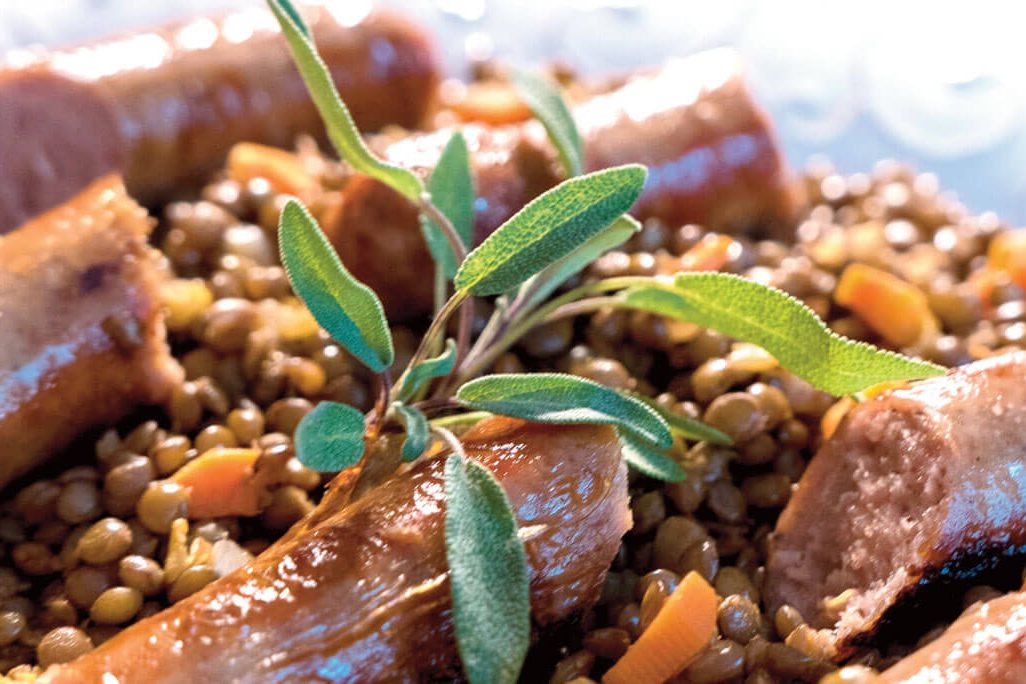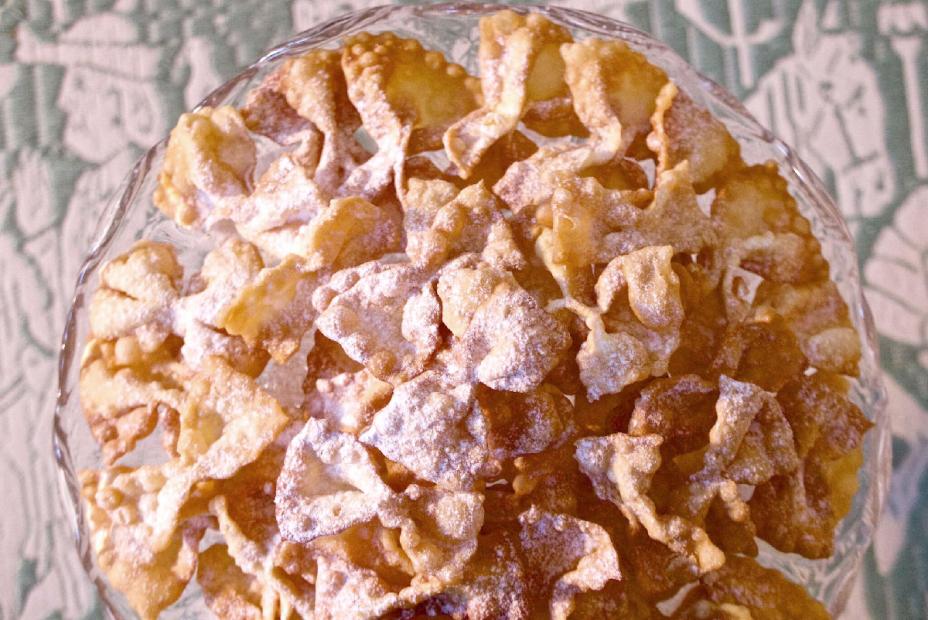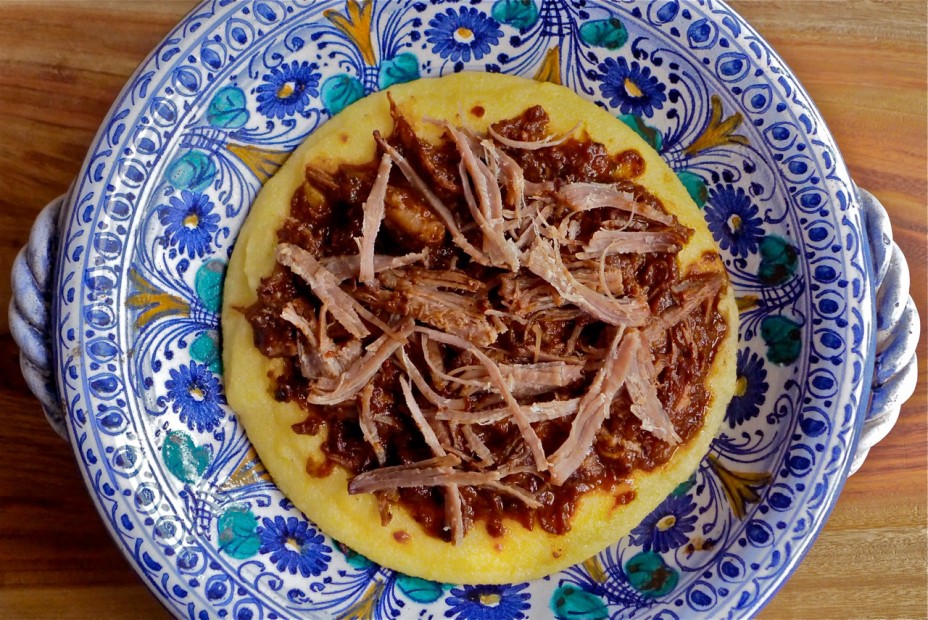When I was growing up, I watched my mother poach, roast, bake, or grill the fish my father caught on his weekend expeditions to Long Island’s Montauk Point. Some of the tastiest fish were those that other fishermen tossed back into the sea, like porgy (pagro in Italian), still one of my favorites. We always looked forward to his return with anticipation of the meals we would enjoy from his catch. My mother would cook the fish whole, in the Italian way, to deliver the fresh flavor of the sea to the plate.
How is it that home cooks now typically avoid cooking the entire fish, when most of the world relishes it from snout to tail? Americans will argue that fish filets or steaks are easier to prepare, but I beg to differ. Italians prefer to cook it whole and more simply than other courses in the Italian repertoire, as a great deal of flavor permeates the flesh from the head, bones, and skin.
Keeping a fish intact save for scaling and gutting allows for stuffing its cavity, and the herbs and vegetables tucked into it will permeate the flesh with their flavor. Additionally, the whole specimen with its protective skin intact is less likely to overcook than the exposed flesh of a cut fillet or steak.
Another factor weighing into our choice of using whole fish is that many of the stocks of sought-after large fish, such as tuna, halibut, swordfish, cod and salmon, are under threat everywhere due to overfishing or threatened habitats. (You can download a consumer guide to research-based recommendations for ocean-friendly seafood choices at http://www.seafoodwatch. org/-/m/sfw/pdf/guides/ mba-seafoodwatch-national-guide.pdf?la=en). The smaller size of many environmentally friendly species that were once overlooked makes them ideal for cooking whole. Many freshwater fish are also on the list, and are usually available whole from your local fishmonger.
Some years ago, as I traveled around Italy’s Lake Garda doing research for a book I was writing about the region, I discovered the delicious potentials of the freshwater fish caught there. A cult of fish exists around the lake, the great size and depths of which support a tremendous variety including whitefish, trout, perch, and bass. A favored cooking technique there is cooking fish in parchment or foil, which seals in all the flavors and moisture, and while filets can be cooked this way as well, the method is ideally suited for preparing whole fish up to one or two pounds for individual servings.

Pesce in cartoccio
Fish in Parchment
For 4 people
Cooking in parchment is an ancient technique, accomplished just as well with foil, which isn’t prone to catch on fire in gas ovens. Use the heavy-duty kind for leak-proof results. If serving a whole cooked fish intimidates, here (http://www. seriouseats. com/2014/07/technique-how-to-carve-whole-cooked-fish.html) is a post that shows you how simple it is. You can do this for each guest in advance of serving or let each person do their own the dinner table. Have a bowl available for the foil and bones.
·4 whole whitefish, trout, or other white-fleshed fish such as flounder, red snapper, branzino, or porgy, about 3/4 pound each, gutted and scaled, but with head and tail intact
·4 medium cloves garlic, sliced very thinly
·1 cup good quality green olives, pitted
·1 pint fresh cherry tomatoes, cut up and excess seeds squeezed out
·½ cup fresh Italian parsley, minced
·good extra-virgin olive oil appropriate for fish
·fine sea salt
·freshly milled pepper
1. Preheat an oven to 425 degrees F.
2. Wash the fish well inside and out in cold running water. Pat dry inside and out with clean kitchen towels or paper towels. Cut the tomatoes in half and squeeze out excess seeds; halve them again.
3. Cut four pieces of heavy foil, each large enough to wrap the fish completely.
4. Rub the inside and the exterior of the fish with olive oil. Sprinkle the cavity and the surface of the fish with salt and pepper. Stuff each fish with the garlic, olives, parsley, and all but a handful of the cherry tomatoes.
5. Place each fish in the center of each piece of foil. Fold the edges in several times. Place the fish packets in a baking dish large enough to accommodate them and transfer them to the middle rack of the oven. Bake until they are cooked through, 130 degrees F when tested on a meat thermometer, or 15-20 minutes, depending on the thickness of the fish. Remove from the oven.
6. Serve the fish packets as described in the headnote. Pass the olive oil for anointing each portion.
Variation using fish fillets: Preheat an oven to 425 degrees F. For 4 people, use four fillets weighing between 1/2 to 3/4 pound each from any of the above fish, or from any firm-fleshed white fish, such as cod, scrod, or haddock. Cut four ample pieces of foil. Drizzle the fillets with olive oil and season with salt and pepper. Distribute the olives, tomatoes, parsley and garlic over the fish. Seal as above and cook for 10-12 minutes (130 degrees when tested with a meat thermometer).
Julia della Croce is a food writer and James Beard award-winning cookbook author and recipe developer based in New York. She is presently incubating a book about her family’s ancestral region, Sardegna. Visit her website, www.juliadellacroce.com and blog, http://juliadellacroce.com/forktales1/, connect on Facebook: Julia della Croce – chef & foodwriter, Twitter: @juliadellacroce and Instagram: juliadellacroce.






























